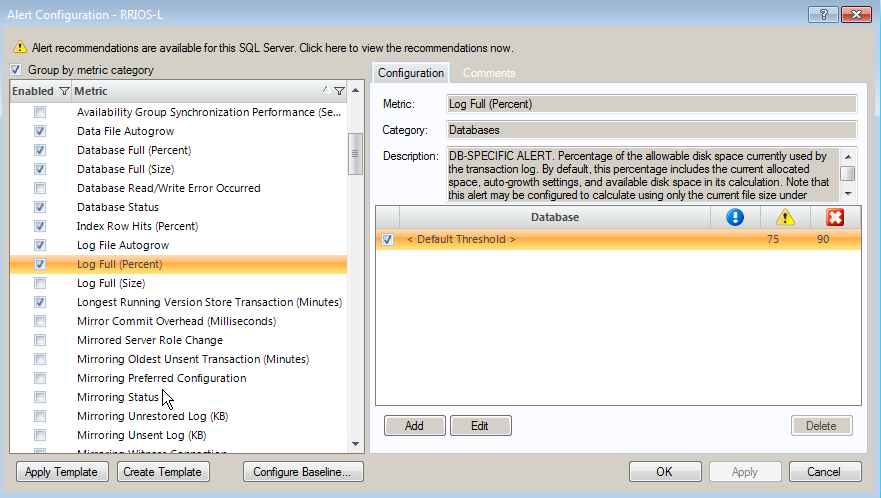You have to admit that title is catchier than yet another “Death of the DBA” blog. And that was exactly the direction I was headed until I ran a...


You have to admit that title is catchier than yet another “Death of the DBA” blog. And that was exactly the direction I was headed until I ran a...
There are a lot of features in SQL diagnostic manager. In this series, I plan to let you know about features that many users never find. In...

I don’t know about you, but deciding when to pull the trigger on an upgrade is not that easy for me. What is to be upgraded usually doesn’t...
It’s an age old problem in IT, one IT department has one standard and tools they use to manage their systems. Another IT department has another...
We are currently working on a new SQL Server agent job monitoring and management tool, to become available later this year. This first release will...

A seasoned SQL Server DBA has many skills, expertise and knowledge. Unfortunately, this also means that his/her time is always on demand by many...
So maybe you downloaded a trial of SQL Compliance Manager and want to play around with it. Or perhaps you already purchased licenses and want to...
Organizing EBS volumes and deleting detached volumes on a regular basis to can help decrease AWS spend. See how easy it is to identify, tag,...
Probably the three most common questions I get about counters in SQL Diagnostic Manager are: “How can I prevent alerting on temporary noise...
SQL Doctor is one of the most popular products in the Idera portfolio and as such we get a variety of questions from users on how it works, where do...
We are about to release upgrades to both SQLyog and MONyog with an important fix: linked libraries possibly vulnerable to the 'Heartbleed'...

SQL Diagnostic Manager has been around for a long time, and many of you have been using it for years. For today’s topic I thought it might be fun to...

The Extended Events technology added to SQL Server in SQL 2008 and expanded upon greatly in SQL 2012 is a powerful mechanism for monitoring activity...

One of the frequent questions I get about SQL Diagnostic Manager pertains to one of the most fundamental features of the product – exactly how is...
The following is a guest post by Microsoft Certified Master Robert L Davis. Find more from him at SQLSoldier.com, and follow him on twitter...
When you read a Registry value of type StringExpand, it will always automatically expand any environment variables contained in the text. This...
If you’re a user of both SQL Elements and SQL Diagnostic Manager, it’s a reasonable bet that you’ll have some overlap of instances being monitored...

SQL Diagnostic Manager SQL diagnostic manager is a full, feature-rich monitoring solution for your SQL Server and virtualization platform with...
I was in Indiana this past weekend at SharePoint Saturday Indianapolis, and one of the presentations I delivered at the event was a favorite of...
In previous tips we illustrated how you can turn file system paths into arrays and then create new paths by changing or excluding parts of the...
When you turn a path into an array to manipulate parts of the path, if you access path elements by fixed index numbers, then this approach will only...
PowerShell lets you access multiple array elements. With the help of -split and -join, you can easily manipulate file system paths this way. To...
In PowerShell 2.0, Set-ItemProperty by default always creates REG_SZ (String) values. PowerShell 3.0 is smarter. When you submit a numeric value,...
Sometimes, you might see interesting information on websites. For example, navigating to http://www.ssa.gov/OACT/babynames/index.html will open a...